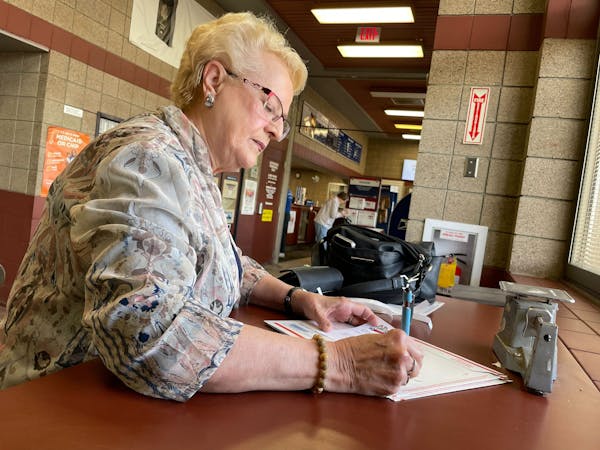Walter O'Malley's attempt to build a new stadium in Brooklyn had failed, and he wanted to move his Dodgers to the gold mine that would be Los Angeles. O'Malley needed another National League team willing to relocate in California in order to make this work.
He convinced Horace Stoneham, owner of the New York Giants, to depart the ancient Polo Grounds in Manhattan and move to San Francisco for the 1958 season.
San Francisco did not get the short end when it came to baseball talent. Willie Mays was in his prime. Orlando Cepeda was a rookie in 1958. Willie McCovey debuted in 1959 and pitcher Juan Marichal in 1960.
The Giants defeated the Dodgers in a three-game playoff to win the National League in 1962. They played the Yankees in a seven-game World Series that took 13 days to complete because of rain delays.
The Yankees won the seventh game 1-0 behind Ralph Terry. The Series ended famously with Matty Alou at third, Mays at second and McCovey lining out to second baseman Bobby Richardson.
The game was played was Oct. 16, 1962. It would be 27 years before the World Series would return to Candlestick Park.
The Giants already were trailing 2-0 against the Bay Area competitors, the Oakland A's, when the Series moved to Candlestick for what were supposed to be the middle three games.
The date was Oct. 17, 1989 -- late on a calm and perfectly blue afternoon.
The ABC pregame show was scheduled for a 5 p.m. start (California time), and the Giants fans were prompted to greet viewers with a cheer. Players were milling around before it was time to gather on the base lines for introductions.
There were 300 reporters in an auxiliary press box that was created in the upper deck behind home plate. I was sitting between Mike Bauman from the Milwaukee Journal and Tom Powers from the St. Paul Pioneer Press.
When the Loma Prieta Earthquake struck at 5:04 p.m., it took us Midwesterners a moment to figure out why the upper deck was shaking and trying to lurch forward. Later, it was reported the quake lasted 15 seconds, but it seemed like five minutes for a guy sitting high in Candlestick.
When the shaking stopped, the fans let out nervous, and then more confident cheers that included the chant, "Let's play ball."
Not tonight. The lights were out. A section of the Bay Bridge had collapsed. There were numerous fires, including in the Marina district. Some sections of a double-decked freeway in Oakland had collapsed in sections and commuters had been crushed.
Hilda Rhodes, 82, wasn't aware of all of this and she waited stubbornly near the top of the stadium.
"I've been through quite a few of these things, and this one couldn't have been that bad," she said. "I've been waiting for the Giants to play in the World Series since 1962. Let's play ball."
Soon, security people with bullhorns were walking through the top deck, telling people to evacuate. One memorable photo from the field showed Mary Steinbach crying on the shoulder of her husband, Oakland catcher Terry Steinbach.
This was taken 20 minutes after the earthquake. Mary had heard about the damage in Oakland and was distraught after being unable to reach the babysitter for 2-year-old daughter Jill.
The Loma Prieta Earthquake measured 7.0 on the Richter scale. Fifty-seven people died directly from the quake, including 42 buried in the Cypress Street freeway structure in Oakland.
The 1989 World Series did not resume for 10 days. It took that long for the citizens to get back in the mood for something as joyous as an all-Bay Area series, as well as to fix the cracks in Candlestick.
The A's had Dave Stewart and Mike Moore, their big two, ready to pitch again and finished off a sweep. Steinbach, the slow-footed Minnesota lad, was a big contributor during the series -- including with a triple in Game 4.
"Did you see me wheeling around second?" Steinbach said during the clubhouse celebration. "That's why they call me Johnny Lightning."
Steinbach had used white tape to place a "J" on the back of his batting helmet for the final two games. It was not in recognition of his mythical faster self, but to draw attention to the search for Jacob Wetterling, an 11-year-old who had been abducted from near his home in St. Joseph, Minn.
That's another 20th anniversary to mark this month. Jacob was taken on Oct. 22, 1989, and has never been found.
Patrick Reusse can be heard 5:30-9 a.m. weekdays on AM-1500 KSTP. • preusse@startribune.com

Reusse: With influx of out-of-state recruits, St. Olaf baseball rises to MIAC's top

Reusse: Ex-Twins pitching coach Johnson brings velocity to Georgia

Reusse: Just as in 1980, surprising contributors fueling Twins' 12-game winning streak


